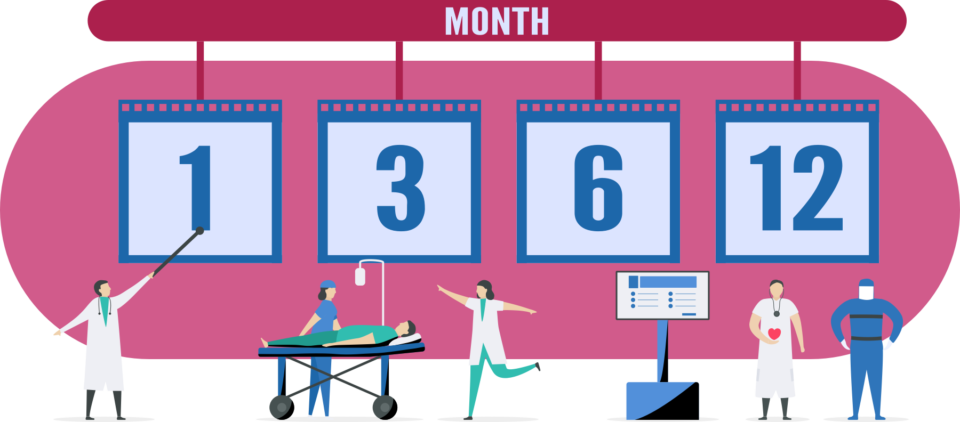Guarantee successful shift coverage with effective workforce planning in healthcare
Try When I Work for free
The healthcare industry seems like a giant puzzle, with pieces that are constantly moving.
Any operations manager will have their hands full with that kind of foundation. How do you plan your workforce when everything seems in flux?
Patient care suffers if your organization has a staff shortage, or not enough staff members with the right qualifications.
We’ve seen in the pandemic how healthcare has expanded beyond the traditional walls of a medical facility, reaching patients through methods such as telemedicine. What had already been a challenge now has to be flexible for how healthcare is evolving.
We also saw how patient numbers waxed and waned, and made staffing incredibly difficult to plan.
How can you schedule your staff with that amount of variance? How do you make sure your patients have the best possible care?
It’s all about developing a workforce plan.
Workforce planning in healthcare.
The healthcare industry has always been fluid. What’s new is an emerging gap in the worst possible place: the ratio of staff to patient need.
Healthcare demands continue to rise as our aging population grows. By the year 2050, there will be about 83.7 million people above age 65. Unfortunately, healthcare staffing is trending in the opposite direction, and fast. By 2024, there may be about 700,000 nursing vacancies across the country.
That’s a troubling number of nursing vacancies that we’re only four years away from seeing.
The trends are clear, and the gap will continue to grow between healthcare demand and healthcare staffing. That’s why workforce planning — starting right now — is so important. If you’re not ahead of the trend, you’re getting run over by it.
What is workforce planning?
In general, workforce planning is about optimizing your workforce in a way that takes into account current and future patient demand and staffing. In the healthcare realm, it is said to be the “process of forecasting the staff your organization will need in the future to be able to provide the highest quality of care and operate with maximum effectiveness.”
In other words, where do you see your organization in the coming year(s) in terms of need, based on the data and trends you’ve seen?
Typically, planning and optimizing a workforce delves into not just scheduling, but also employee performance, attendance, customer experience, and of course, scheduling.
Remember those moving pieces? There are many.
The challenges of workforce planning in healthcare.
Workforce planning for any industry has its challenges. Managers need to deal with time off requests, no shows, overtime issues, payroll, budgets, certification, and skill sets. This is overwhelming, and the more overwhelmed a manager is, the more likely there is to be tension among staff and, in the case of healthcare, compromised patient care.
Workforce planning is even trickier for the healthcare industry, though.
Other industries may have an easier time calculating how much staffing they’ll need for customer demand based on more predictable sales data, but with healthcare, it’s not as straightforward. Healthcare managers have additional challenges to deal with:
- Patient needs. This may be in-house or telehealth needs. Not every patient requires the same level of care. Patient volume fluctuates depending on services needed or times of emergency, seasonal illness, or other unusual capacity requirements.
- Certification requirements. The healthcare industry has very specific certification requirements for staff, and it affects how, when, and even with whom they should be scheduled to work with. Regulatory requirements and constraints are increasing, and changes in technology are changing staff roles and function. In other words, this part of planning isn’t getting simpler by any means.
- Staff retention. While every industry struggles with retaining workers, the healthcare industry has the additional problem of making sure the staff they do have has the right qualifications. Healthcare has an incredibly high burnout rate, while replacement staff means years of licensing and educational requirements.
- Seasonal illness. Illness can have an impact on both staff and patient volume in an unfortunate way that no other industry experiences. You basically end up with higher than normal “customer” demand and depleted staff at the same times.
You have to get workforce planning right. It’s not something that can be left to guesswork.
Poor workforce planning often leads to some staff being overworked while others are underutilized. This creates poor staff morale (which we’ll cover next) that directly leads to poor patient care. One missing piece creates another.

What workforce planning tools work best?
The best workforce planning tool is the one that bolsters areas of weakness without creating new ones. These may be unique to your organization. You can suss out some options by a little self-inquiry:
- What areas of planning are you struggling to deal with properly? Scheduling? Excessive overtime?
- Have you taken inventory of the gaps in scheduling and patient care?
- What kinds of tools would you use out of what’s available?
- What kinds of tools would integrate with how you and your team are already working or are willing to adjust to?
As mentioned, the healthcare industry has unique workforce planning needs which need to be considered when selecting the tools best for you, but when it comes to choosing any tool, those questions work for any industry.
The benefits of workforce planning in healthcare.
Workforce planning isn’t another report that gets filed once a year. Overall, workforce planning will legitimately improve patient care, plain and simple.
When done right, you’ll see your scheduled staffing lineup with patient demand, you’ll see an increase in morale among staff, and you’ll also see a reduction in labor expense by about 4 – 7%.
Staff morale isn’t just about staff; it has a trickle down effect on the quality of care for patients. Good workforce planning means you cut down on floating, forced overtime, and make it possible for staff to schedule personal plans and vacations in advance instead of almost last minute. That leads to happier staff.
Labor expenses are also crucial. Those expenses often pop up in overtime, so cutting that overtime expense as much as possible is a serious task. It’s common for healthcare organizations to turn to workforce planning as a way to reduce overstaffing and lessen the overtime issue.
But here’s one of the more surprising benefits, and it has to do with patient demand and care: workforce planning is the best way to manage staff based not only on credentials, but actual skill sets.
Not every equally qualified healthcare worker has the same skill set. Some are better at certain things than others. It might be because of training, years of experience, or credentials. When you take these differing skill sets into consideration, patients benefit in two ways:
- Skill set diversity. With good workforce planning, you can be sure that there’s a mix of skill sets scheduled for every shift. A broader set of expertise present at any given time improves patient care and outcome.
- Skill set balance. Mixing novice talent with more experienced talent is a great strategy for efficiency, strengthening tomorrow’s workforce, and improving patient care. It’s the perfect mix of knowledge and attention.
These benefits from workforce planning don’t happen by accident, though.
Your plan has to be solid before implementing.
It’s about planning for staff and patient growth or reduction, and regular assessments of current staffing ability. It’s about forecasting needs, and developing a hiring process that attracts the right talent to fill the gaps. It’s about gathering data and, even more important, understanding it.
With the right strategy and technology, workforce planning moves away from an inefficient practice of guesswork and toward an accurate planning model that can save your healthcare organization massive amounts of time and resources…all while increasing their level of patient care.
Download our free ebook to learn how to guarantee shift coverage with effective workforce planning.






